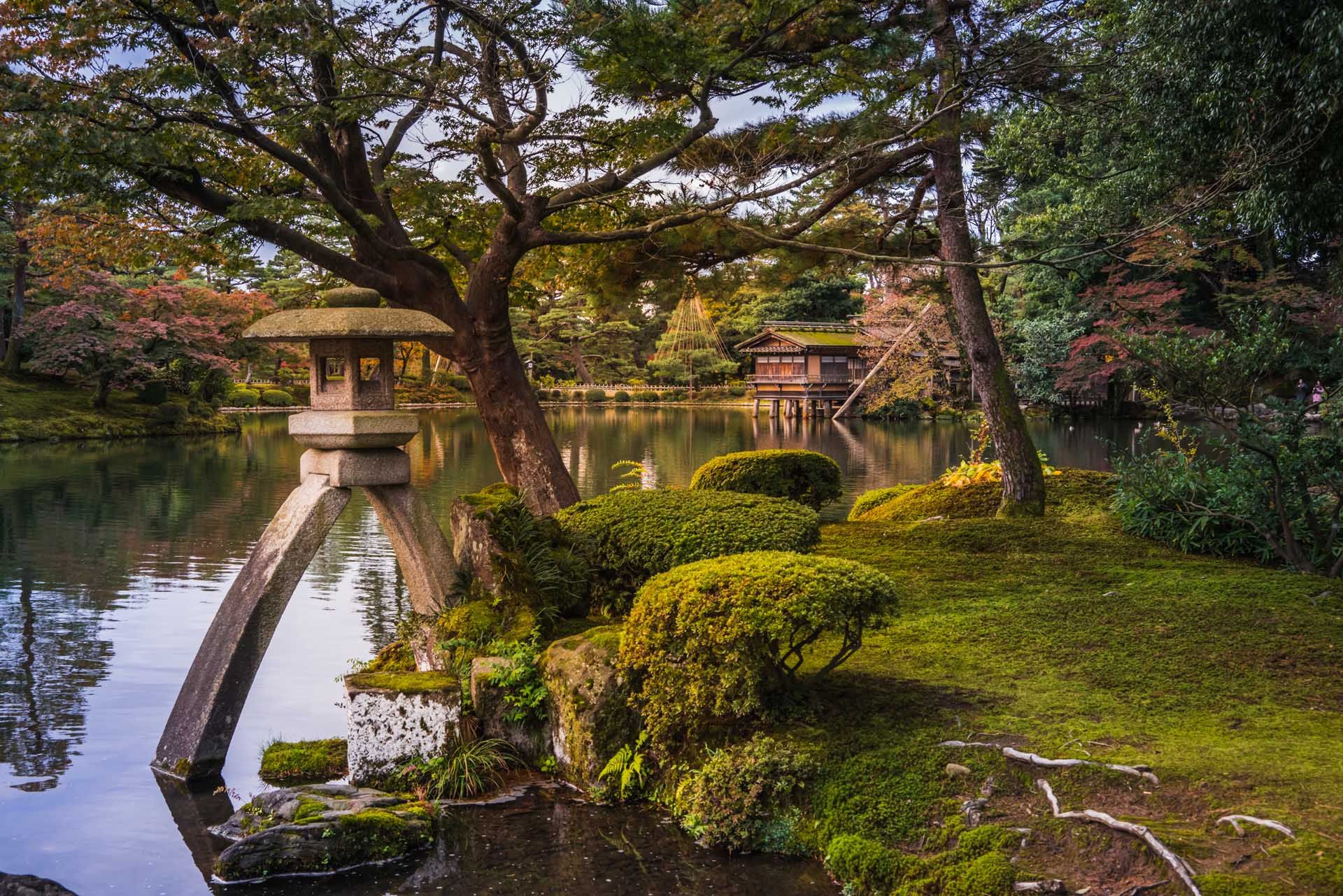Which sights shouldn’t I miss?
No trip to Kanazawa would be complete without a visit to the beautiful Kenroku-en garden. Once the outer grounds of Kanazawa’s castle, today the garden is ranked as one of the top three great gardens in Japan. And it’s easy to see why. Artfully arranged over stepped levels, riddled with little streams, adorned with sculpted pine trees and boasting views out over Higashi Chaya’s rooftops to the snow-sprinkled mountains beyond, the garden is a real pleasure to explore.
Also hot on Kanazawa’s must-see list are the city’s wonderful historic areas. Hemmed in by heavy earthen walls, Nagamachi – the old samurai district – is a tightly-woven area of winding cobbled streets, traditional houses and little canals. As well as a samurai heritage, the city – which aside from Kyoto, is the only town in Japan where old-style training of geishas still takes place – also boasts three geisha districts, of which Higashi Chaya is the largest. A charming mesh of streets lined with row-upon-row of traditional machiya houses, this is the place to head for an old-style cup of matcha. Among little shops selling gold-flecked pottery and bottles of local sake, are a number of traditional teahouses – choose Ochaya Shima, where the tearoom sits at the back of a historic geisha-entertaining house that’s crammed with beautiful artefacts.
Another fascinating insight into Kanazawa’s past is the Myōryū-ji. Dating back to 1643, this temple has earned the nickname of “Ninja temple” owing to a maze-like interior that’s made up secret passageways, concealed chambers, trap doors and hidden staircases.
And finally, for a blast of the hyper-modern don’t miss the 21st Century Museum of Contemporary Art, a dynamic hub for the city’s arts scene that showcases a revolving programme of exciting exhibitions.



